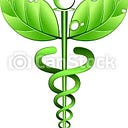THE BIOCHEMISTRY OF SALIVA
Can you imagine yourself eating a meal without saliva?
What Is Precisely A Saliva?
1-Saliva is secreted by three pairs of glands (parotid, sublingual, sub-maxillary), and other microscopic glands disseminated under the lingual mucosa.
2-Saliva is a colorless, opalescent more or less viscous liquid, its pH is alkaline around 6.5.
3-Saliva contains about 99 percent water; electrolytes, and enzymes represent 0.5 percent.
4-The organic constituents of saliva are mucin, enzymes, urea.
5-Saliva contains several enzymes, are ptyalin, lysosomes maltase, immunoglobulins, mucosal glycoproteins, traces of albumin, some polypeptides and oligopeptides.
6-Secretion are conducted through ducts that open directly into the lumen.
7-Salivary glands are stimulated by chemical, electrical, nervous and hormones.
8-Serous comes from serum, it means that the secretion is watery and comes from the blood.
9-Mucus comes from a protein called mucin. When mucin is added to water, then the result is mucus.
10-In the lumen, enzymes are secreted by acinus cells. However, their ducts leak electrolytes.
11-Find two electrolytes channels within the duct membrane: the bicarbonate and chloride channel and the potassium and sodium channel.
12-Osmolarity is caused by sodium.So, when sodium is removed from a fluid, it turns hypotonic.
13-Lumen is isotonic because of its relation with plasma.
